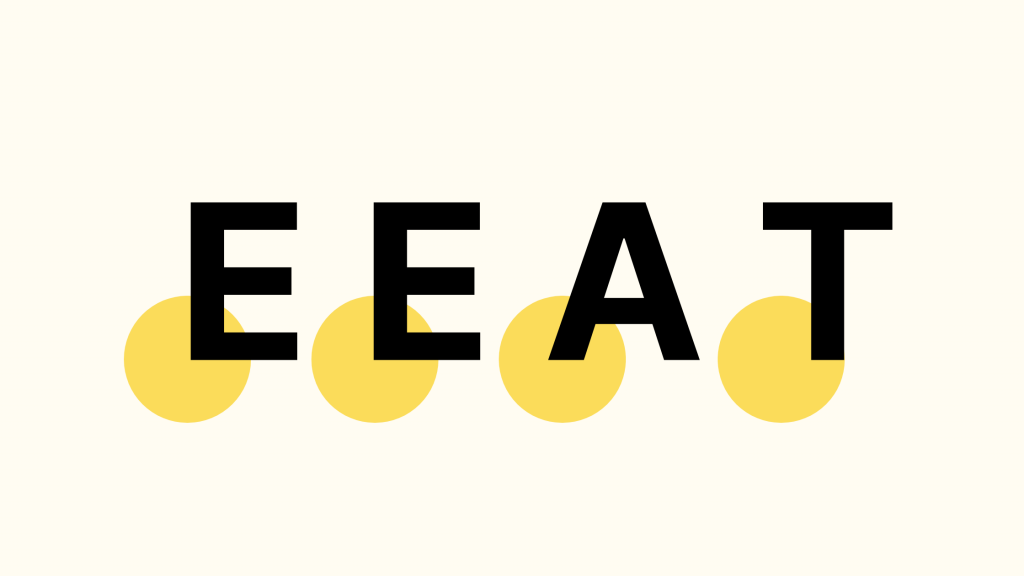The E-E-A-T Content Checklist

By Giuseppe Colucci, Senior VP of Growth at Textbroker & André Franco, Senior SEO Consultant
How to build Authority and demonstrate First-Hand Experience and Expertise at Scale
As SEO keeps evolving, E-E-A-T has gradually shifted from a qualitative guideline to a set of quantifiable parameters that allow Google to benchmark one piece of content against another. As search engines increasingly favour content created by individuals with genuine first-hand experience, businesses need a structured, scalable approach to creating such content.
This type of content also helps SEO stay relevant in the marketing mix as it provides results and ROI that might also be relevant for other marketing fields, such as brand, digital PR, social media, and influencer marketing.
To be able to scale up your E-E-A-T-focused, authoritative content production, we have created a checklist that will tell you all you need to know about the necessary steps to take, from spotting your current authority gaps to restructuring your content to showcase more 1st-hand experience and expertise, up to guidelines on which experts to engage to prove that. Here is our checklist.
Our E-E-A-T Content Implementation Checklist
1. Audit existing content and competitor formats
Focus on pages ranking lower than position three to maximise uplift potential. Exclude the pages on top 3, which have less uplift potential. Create a performance data model to prioritize pages based on expected revenue increases. Benchmark against competitors’ use of text plus images or text plus video, and investigate whether they are using any particular type of structured data (schema.org/Person for author bio or schema.org/Article for article), as well as social proof.
2. Create a prioritization system tied to business objectives
Develop a tiered framework based on projected new customer gains and revenue over the next twelve months. Apply the CTR uplift model and conversion rate estimations to score pages. Select the top pages for premium multimedia content, which include text and video, and the following ones (number differs based on the budget) for image-enriched text.
If you are interested, we can share our prioritization model template with you:
3. Define tiered content requirements
Image-enriched pages should feature high-quality plus three to five webp images with lazy loading, srcset, and descriptive alt text. Premium multimedia pages should feature a longer piece of content (e.g., 600-700 words vs 500 words for image-enriched content) plus embedded video with VideoObject schema (find more about schema and how to implement it) , transcript, and thumbnail, along with images.
4. Create content briefing templates for contributors
Create a briefing for each tier, detailing how to follow content and SEO best practices. Include guidelines on narrative styles (e.g., warm first person, short paragraphs), heading hierarchy, keyword usage, internal link rules, and section outline (e.g. Introduction, Experience, Images/Video, Tips, and Conclusion). Additionally, add to the briefings a content template that shows what the final text would look like. Prepare separate templates for each tier. Finally, set up the client’s CMS to make it suitable to host this E-E-A-T optimized content.
5. Develop Expert Engagement guidelines for contributors
Define ideal contributor profiles and a scoring matrix covering experience, relevance, content quality, online authority, and professionalism. Define the set of rules to follow: social media following thresholds (and blog active engagement), list of excluding criteria, subset of specific rules by locale.
6. Assemble and train your Expert Engagement team
Form a dedicated in-house or agency-supported unit to scout experts, based on the type of profiles you’re looking for, varying from academics, professionals with certain hard skills criteria, up to bloggers, creators, influencers, and in general, individuals with strong social proof in your niche of interest.
Create a list of selection criteria and train your team to find the right profiles across relevant channels (from main Social Media to niche forums or groups on LinkedIn, Reddit, Discord), and using the right tools for an efficient and effective outreach. Train them also to vet authenticity, verify media compliance, and apply the scoring matrix for consistent recruitment.
If you are interested in looking at examples of authoritative content that meets our guidelines :
